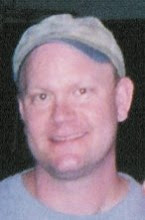Listen to the Breath
Here's a excerpt from the Breath Sweeps Mind audio program I still listen to every once in a while. I found this teaching on breathing very helpful when practicing zazen and thought others might benefit as well.
So, we are breathing through the mudra. The mudra is your primordial nose and your nose is your second nose. And by breathing this way you're unifying your whole body, the top and the bottom. Many people will find out that they are only breathing from their chest. But if you just make your awareness as you are breathing, in fact you can breath through your whole body, all 84,000 pores. And when you breath through the mudra -- the tanden means "field of essence" -- you are breathing through the "field of essence". When you breathe through that one spot, you are breathing with the entire body, the 84,000 pores.In a later part of the audio I really like what Kwong-roshi says about not listening to your thinking, because of it being infinite in variety and amount. He says instead, just listen to your breath and you will be so much happier because of it. Just listen to the breath.
In Bishop Yamada Roshi's method of zazen, he describes the expelling of the breath is called koki, the expelling of the breath. And the sound it makes is called unshu. And from his experience of many, many years of sitting, the sound of the breath determines the strength and clarity of your sitting. So, the sound of the breath goes from course to fine, not just through your nostrils but through your tanden as well. So, you are breathing from both points and it sounds like this: {the sounds of Kwong-roshi breathing out}. And then inhalation: {the sounds of Kwong-roshi breathing in}. Diaphragm expanding. Diaphragm full of air. And then there is a natural pause where the air is being disseminated. And then again exhale: {the sounds of Kwong-roshi breathing out}. So, course to fine. And right under my chin where my throat is, there’s tension. In fact it's kind of shut off and it's forcing the air to come out in large stream to a fine stream of air and imagining also from the tanden it's coming out the same way, at the same time. {the sounds of Kwong-roshi breathing out}.
So, this unshu was explained by Kiezan Zenji (who was 4 generations after Dogen), one of our ancestors, in his instructions on zazen. So we should know it's meaning and experience it's use, it's purpose. So, in a sense, Zen in a nut-shell would be: when this kind of breathing happens, it cuts through your delusions (meaning your greed, anger and ignorance; the conditioned mind), it cuts through the thinking mind, which is our obstacle. Once the obstacle is cut through, specifically on the exhalation, (that's the execution breath, when we begin something, that's our strength breath, that's also the breath of letting go, that's also the breath of compassion and forgiveness; there's a lot going on there), that's when this form expires into emptiness. It's all in the breath. {the sounds of Kwong-roshi breathing out}. So because it cuts through the obstacles (the greed, anger and ignorance; our dualistic thinking), you have a glimpse of your own original nature. Not only do you experience your own original nature but you experience the original nature (or you can call it your buddha nature) in each and everything you see or in the entire universe, this same quality. So that means your demeanor changes, your relationship to yourself, to other people, to inanimate objects as well as animate objects, all change, because you recognize, you're aware that this same basic nature exists everywhere. It's like everywhere you go you encounter the self. So this is the deep gratitude, and just one of the many, many fruits of Zen.~ Jakusho Kwong-roshi

<< Home